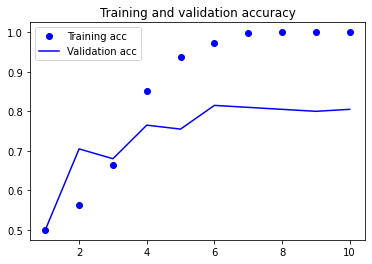Sentiment Classification with Transformer (Self-Study)#
In this unit, we implement a transformer-based Sentiment Classifier for the NLTK movie reviews dataset.
Dependencies#
import nltk, random
import numpy as np
from nltk.corpus import movie_reviews
import tensorflow as tf
from tensorflow import keras
from tensorflow.keras import layers
from sklearn.model_selection import train_test_split
from lime.lime_text import LimeTextExplainer
## checking tf version
print(tf.__version__)
2.13.0
Transformer Block#
A Transformer block consists of layers of Self Attention, Normalization, and feed-forward networks (i.e., MLP or Dense)).
We use the
TransformerBlockprovided bykeras(See keras official tutorial on Text Classification with Transformer.(Source: Transformers From Scratch)
# soruce:(https://keras.io/examples/nlp/text_classification_with_transformer/)
class TransformerBlock(layers.Layer):
def __init__(self, embed_dim, num_heads, ff_dim, rate=0.1):
super(TransformerBlock, self).__init__()
self.att = layers.MultiHeadAttention(num_heads=num_heads,
key_dim=embed_dim)
self.ffn = keras.Sequential([
layers.Dense(ff_dim, activation="relu"),
layers.Dense(embed_dim),
])
self.layernorm1 = layers.LayerNormalization(epsilon=1e-6)
self.layernorm2 = layers.LayerNormalization(epsilon=1e-6)
self.dropout1 = layers.Dropout(rate)
self.dropout2 = layers.Dropout(rate)
def call(self, inputs, training):
attn_output = self.att(inputs, inputs) # self-attention layer
attn_output = self.dropout1(attn_output, training=training)
out1 = self.layernorm1(inputs + attn_output) # layer norm
ffn_output = self.ffn(out1) #feed-forward layer
ffn_output = self.dropout2(ffn_output, training=training)
return self.layernorm2(out1 + ffn_output) # layer norm
Embedding and Position#
And in Transformer-based networks, we need to include positional information of the tokens in the embeddings.
Again, we use the
TokenAndPositionEmbeddingprovided inkeras’s tutorial.
class TokenAndPositionEmbedding(layers.Layer):
def __init__(self, maxlen, vocab_size, embed_dim):
super(TokenAndPositionEmbedding, self).__init__()
self.token_emb = layers.Embedding(input_dim=vocab_size,
output_dim=embed_dim)
self.pos_emb = layers.Embedding(input_dim=maxlen, output_dim=embed_dim)
def call(self, x):
maxlen = tf.shape(x)[-1]
positions = tf.range(start=0, limit=maxlen, delta=1)
positions = self.pos_emb(positions)
x = self.token_emb(x)
return x + positions
Note
KerasNLP is an independent package developed for Keras 3+ that offers a comprehensive toolbox for natural language processing (NLP). It includes modular building blocks that range from pretrained state-of-the-art models to low-level components like Transformer Encoder layers.
In particular, the package includes modeling layers, such as TransformerEncoder, TransformerDecoder, TokenAndPositionEmbedding layers for various NLP tasks.
For more details, you can visit the KerasNLP documentation.
Data#
Now let us re-cap the important steps of data preparation for deep learning NLP:
Texts in the corpus need to be randomized in order.
Perform the data splitting of training and testing sets (sometimes, validation set).
Build
tokenizerusing the training set.All the input texts need to be transformed into integer sequences.
All the class labels need to be coded in numeric integers(as logits for
binary_crossentropyor labels forsparse_categorical_crossentropy) or one-hot encodings (forcategorical_crossentropyof the multi-class labels).Determine the vocabulary size and the maximum length of the input sequences.
Padding the input sequences to uniform lengths (i.e., the
max_len).
Preprocessing Steps#
Procedures:
Load the corpus texts (
nltk.corpus.movie_reviews)Build the keras
tokenizer()Fit the
tokenizeron the corpus textsConvert the word sequences of texts into integer sentences with the
tokenizerPad input lengths to uniform sizes
## loading corpus
documents = [(' '.join(movie_reviews.words(fileid)), category)
for category in movie_reviews.categories()
for fileid in movie_reviews.fileids(category)]
random.shuffle(documents) #in-place shuffle
print('Number of Reviews/Documents: {}'.format(len(documents)))
print('Sample Text of Doc 1:')
print('-' * 30)
print(documents[0][0][:50]) # first 50 words of the first document
Number of Reviews/Documents: 2000
Sample Text of Doc 1:
------------------------------
disconnect the phone line . don ' t accept the cha
## Train-Test Split
train_set, test_set = train_test_split(documents, test_size=0.1, random_state=42)
## Hyperparameters fot tokenizer
vocab_size = 10000
maxlen = 200 # Only consider the last 200 words of each movie review
## texts vs. labels
texts = np.array([t for (t, l) in train_set])
labels = np.array([1 if l == 'pos' else 0 for (t, l) in train_set])
## tokenizer
tokenizer = keras.preprocessing.text.Tokenizer(num_words=vocab_size)
## fit tokenizer
tokenizer.fit_on_texts(texts)
## text to sequences
texts_to_int = tokenizer.texts_to_sequences(texts)
## pad sequences
texts_to_int_pad = keras.preprocessing.sequence.pad_sequences(texts_to_int,
maxlen=maxlen,
truncating='pre',
padding='pre')
## X and y for train and val
x_train = texts_to_int_pad
y_train = labels
## Perform same vectorization on testing set
x_val_text = np.array([t for (t,l) in test_set])
x_val = keras.preprocessing.sequence.pad_sequences(
tokenizer.texts_to_sequences(x_val_text),
maxlen=maxlen,
truncating='pre',
padding='pre'
)
y_val = np.array([1 if l == 'pos' else 0 for (t, l) in test_set])
Tip
It would be better if we can wrap the text vectorization into one functional call.
print(x_train.shape)
print(y_train.shape)
print(x_val.shape)
print(y_val.shape)
(1800, 200)
(1800,)
(200, 200)
(200,)
# Check Total Vocab Size
total_vocab_size = len(tokenizer.word_index) + 1
print('Total Vocabulary Size (Untrimmed): %d' % total_vocab_size)
print('Vocabulary Size (trimmed): %d' % vocab_size)
Total Vocabulary Size (Untrimmed): 37722
Vocabulary Size (trimmed): 10000
Define Classifier Architecture#
We then define the architecture of the network like before using
kerasSequential or Functional API.The
TransformerBlockandTokenAndPositionEmbeddingfunction as like the otherkeras.layers.
embed_dim = 32 # Embedding size for each token
num_heads = 2 # Number of attention heads
ff_dim = 32 # Hidden layer size in feed forward network inside transformer
## Using Sequential API
model = keras.Sequential()
model.add(layers.Input(shape=(maxlen, )))
model.add(TokenAndPositionEmbedding(maxlen, vocab_size, embed_dim))
model.add(TransformerBlock(embed_dim, num_heads, ff_dim))
model.add(layers.GlobalAveragePooling1D())
model.add(layers.Dropout(0.1))
model.add(layers.Dense(ff_dim, activation='relu'))
model.add(layers.Dropout(0.1))
model.add(layers.Dense(1, activation='sigmoid'))
# ## Using Functional API
# inputs = layers.Input(shape=(maxlen,))
# embedding_layer = TokenAndPositionEmbedding(maxlen, vocab_size, embed_dim)
# x = embedding_layer(inputs)
# transformer_block = TransformerBlock(embed_dim, num_heads, ff_dim)
# x = transformer_block(x)
# x = layers.GlobalAveragePooling1D()(x)
# x = layers.Dropout(0.1)(x)
# x = layers.Dense(20, activation="relu")(x)
# x = layers.Dropout(0.1)(x)
# outputs = layers.Dense(1, activation="sigmoid")(x)
# model = keras.Model(inputs=inputs, outputs=outputs)
keras.utils.plot_model(model, show_shapes=True)

Training#
model.compile(optimizer="adam",
loss="binary_crossentropy",
metrics=["accuracy"])
history = model.fit(x_train,
y_train,
batch_size=128,
epochs=10,
validation_data=(x_val, y_val))
Epoch 1/10
15/15 [==============================] - 2s 81ms/step - loss: 0.6983 - accuracy: 0.5000 - val_loss: 0.6909 - val_accuracy: 0.5000
Epoch 2/10
15/15 [==============================] - 1s 75ms/step - loss: 0.6799 - accuracy: 0.5622 - val_loss: 0.6654 - val_accuracy: 0.7050
Epoch 3/10
15/15 [==============================] - 1s 76ms/step - loss: 0.6194 - accuracy: 0.6644 - val_loss: 0.6136 - val_accuracy: 0.6800
Epoch 4/10
15/15 [==============================] - 1s 77ms/step - loss: 0.4663 - accuracy: 0.8517 - val_loss: 0.4977 - val_accuracy: 0.7650
Epoch 5/10
15/15 [==============================] - 1s 81ms/step - loss: 0.2413 - accuracy: 0.9367 - val_loss: 0.4942 - val_accuracy: 0.7550
Epoch 6/10
15/15 [==============================] - 1s 76ms/step - loss: 0.0936 - accuracy: 0.9733 - val_loss: 0.4933 - val_accuracy: 0.8150
Epoch 7/10
15/15 [==============================] - 1s 77ms/step - loss: 0.0208 - accuracy: 0.9978 - val_loss: 0.6298 - val_accuracy: 0.8100
Epoch 8/10
15/15 [==============================] - 1s 77ms/step - loss: 0.0076 - accuracy: 1.0000 - val_loss: 0.7051 - val_accuracy: 0.8050
Epoch 9/10
15/15 [==============================] - 1s 81ms/step - loss: 0.0043 - accuracy: 1.0000 - val_loss: 0.7556 - val_accuracy: 0.8000
Epoch 10/10
15/15 [==============================] - 1s 81ms/step - loss: 0.0028 - accuracy: 1.0000 - val_loss: 0.7601 - val_accuracy: 0.8050
Ploting Training Results#
import matplotlib.pyplot as plt
import matplotlib
import pandas as pd
matplotlib.rcParams['figure.dpi'] = 150
# Plotting results
def plot1(history):
acc = history.history['accuracy']
val_acc = history.history['val_accuracy']
loss = history.history['loss']
val_loss = history.history['val_loss']
epochs = range(1, len(acc) + 1)
## Accuracy plot
plt.plot(epochs, acc, 'bo', label='Training acc')
plt.plot(epochs, val_acc, 'b', label='Validation acc')
plt.title('Training and validation accuracy')
plt.legend()
## Loss plot
plt.figure()
plt.plot(epochs, loss, 'bo', label='Training loss')
plt.plot(epochs, val_loss, 'b', label='Validation loss')
plt.title('Training and validation loss')
plt.legend()
plt.show()
def plot2(history):
pd.DataFrame(history.history).plot(figsize=(8, 5))
plt.grid(True)
#plt.gca().set_ylim(0,1)
plt.show()
plot1(history)


Given the small corpus size, it is clear to see that our model starts to overfit the training set quite a bit after the first few epochs (e.g, after the fourth epoch).
In real application development, we may improve the model by:
increasing the datasets
increasing the embedding dimensions
using pre-trained embeddings
playing with the transformer blocks in terms of depths and widths of the layers
including dropouts, regularization, and normalization
Explanation#
explainer = LimeTextExplainer(class_names=["negative", "positive"])
def model_predict_pipeline(text):
_seq = tokenizer.texts_to_sequences(text)
_seq_pad = keras.preprocessing.sequence.pad_sequences(_seq, maxlen=maxlen)
return np.array([[float(1 - x), float(x)]
for x in model.predict(np.array(_seq_pad))])
#return model.predict(np.array(_seq_pad)) ## use this for logits
text_id = 123
model_predict_pipeline(x_val_text[[text_id]])
1/1 [==============================] - 0s 76ms/step
array([[1.39474869e-05, 9.99986053e-01]])
## correct label
y_val[text_id]
1
exp = explainer.explain_instance(x_val_text[text_id],
model_predict_pipeline,
num_features=10,
top_labels=1)
exp.show_in_notebook(text=True)
157/157 [==============================] - 2s 11ms/step
References#
This unit is based on the official keras tutorial: Text classification with transfomer
Please read Peter Bloem’s blog post on Transformers: Transformers From Scratch. Highly recommended! Very comprehensive introduction of the attention mechanism and transformers.

